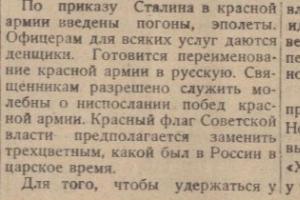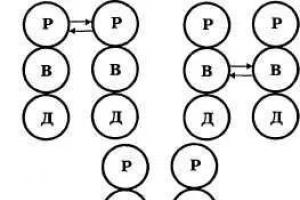You will need
- - double sided tape;
- - soldering iron or iron;
- - two metal plates;
- - cotton fabric;
- - chromic anhydride or chromium;
- - BF-2 glue (phenolic butyral);
- - glue for polyethylene;
- - individual protection means.
Instructions
Connect the joints of the plastic film using double-sided tape. This is the simplest and quick way attach parts made of this material to each other. However, do not expect the glued parts to withstand much stress.
Weld polyethylene - perhaps this is the most common way to join film parts. It requires caution, since during heat treatment you risk damaging the material. We can recommend three proven methods: - place both sides of the polyethylene to be glued between two metal plates so that the edges of both parts protrude slightly. Run a soldering iron over them - the metal will not curl. Also, if necessary, you can make a polyethylene patch by thermally treating the edges of the parts to be welded; - use an iron heated to maximum hot temperature. In this case, the parts should be overlapped (at least 1-1.5 cm). Place even strips under the back layer of the film and on top and iron them; - you can connect the polyethylene parts by dripping molten plastic onto their joint. This way you can repair not only film, but also other plastic items.
Find the right adhesive for plastics. The vast majority of adhesives will not work for you. Some mixtures can be used, but only after preparing the surface of the plastic - it should become more active. To do this you will have to "mini-". So, after applying a solution of chromic anhydride (25%) to polyethylene, you can use BF-2 glue. You can get the specified chromium preparation in chemical stores or from familiar chemists. You can replace it with a chrome pick.
Try a special adhesive for polyethylene, such as DP 8005 (structural adhesive for plastics) or WEICON Easy-Mix PE-PP (structural adhesive for polyethylene and ). The peculiarity of such compositions is that pre-treatment of the material is not required. The mixture changes the structure of the polyethylene surface, after which it sticks together normally.
note
When working with chemicals when repairing polyethylene, you need to be extremely careful - outdoors and with personal protective equipment (gloves, overalls, mask and goggles). Chromium preparations are poisonous and leave permanent stains on clothing. If you do not have the conditions to work with chemicals, it’s better not to take risks and use more gentle methods.
Sources:
- Bonding of plastics
- gluing polyethylene film
- Is it possible to glue plastic film?
Oilcloth is a synthetic material for wall decoration, as it looks beautiful and is quite cheap. It is worth knowing about the technology of gluing oilcloth and all the intricacies of this process even before you decide to glue the material at home or in the country.
Instructions
In order to determine how much oilcloth you will need, take measurements of the room, that is, the number of pieces for pasting should be equal to the number of meters of wall length (you can ignore window and door openings).
If the room has been wallpapered previously, completely remove all previous coatings. If there is paint on the walls, moisten them with water and remove the plaster, plaster, paint, and then dry thoroughly.
Now take the oilcloth panels themselves and spread them with glue evenly over the entire area, without missing a single area, otherwise bubbles may form.
The Russian market does not experience a shortage of adhesives. It contains an abundance of adhesive compositions of domestic and foreign production, capable of gluing almost any surface. For example, the popular line of adhesives is widely represented. This glue is unique as it has a wide range of applications for gluing polyethylene foam, shoe uppers, natural and artificial leather, textiles to leather and rubber soles. Universal household glue 152 I-1 is indispensable in everyday life; this glue will help you fix virtually any household breakdown. Waterproof elastic adhesive is designed for gluing a wide range of materials: rubber and rubber-like materials, leather, fabric, metal, wood and cardboard in any combination. Suitable for chipboard gluing, fiberboard, laminate and plywood. The adhesive can be used for finishing and repair work in construction, for gluing linoleum, carpet, cork, and any other natural and artificial floor coverings to various substrates (cement or concrete, asphalt, wood, chipboard, fiberboard), gluing ceramic facing tiles, polymer facing tiles on concrete, wood base, plaster. But even among such abundance it is not easy to find glue that can solve such a complex problem as gluing thick or thin polyethylene. This problem often arises for owners. summer cottages with greenhouses, home craftsmen, car owners, etc. What is the difficulty of gluing polyethylene and is it even possible to do it?
Foamed polyethylene is a material that is widely in demand in various fields and has a lot of unique properties and advantages. One of them is its chemical inertness, the lack of reaction to most chemical irritants. It’s a paradox, but precisely this advantage of polyethylene in this case turns into a significant disadvantage of the popular material, because it is immune to most adhesive compositions and has extremely low adhesion ability. And yet there are ways to connect polyethylene surfaces. Let's consider three of them, providing the most durable and reliable connection:
- welding of polyethylene;
- gluing with acrylate glue;
- gluing with epoxy glue with an oxidizing agent.
Joining polyethylene by welding
Most reliable seam can be obtained by properly welding this material. What complicates the welding process? The next nuance that must be taken into account: polyethylene is molded hot and under high pressure, reaching hundreds of kg per square centimeter. When welding, it is heated again under normal atmospheric pressure until it melts, and then it shrinks somewhat, complicating the welder’s work. Based on the type of object being welded, a distinction is made between film welding and welding of products made of thick polyethylene - cans, pipes, etc.
Thin polyethylene film is welded using a special apparatus or preheated improvised devices. In the machine, the film is glued together as follows: its joined layers are pulled along a wedge heated to a certain temperature, and then pressed against each other with a pair of special rollers. Proper selection of the degree of heating and pressure of the rollers ensures a tight and reliable connection.
If you practice, you can get the hang of gluing polyethylene even with a regular electric soldering iron or iron. The latter should work through paper to prevent damage to its sole. This is done like this: the edges of the film are connected to the overlay, covered with paper and quickly passed over it with the edge of the hot sole of the iron. With a soldering iron tip connected through a voltage regulator, polyethylene is welded even better, and without any paper.
Gluing thick polyethylene is a more complex process that requires special skills. The best way heating it is a portable gas burner, which is comfortable to work with. You can also use a hair dryer with a nozzle for a narrow stream of air heated to +250°C.
Welding is performed in the following order:
- the surface area where the work will be carried out is cleaned and dried;
- a polyethylene seam filler is prepared - it is better if it is a tape of the same material from which the object being welded is made;
- the edges of the soldered seam are heated to the melting stage - they should “settle” somewhat, but it is important not to overdo it;
- an additive is gradually introduced - it is fused into both sides of the seam; its thickness should correspond to the thickness of the material of the product being glued;
- The seam is allowed to cool completely.
Gluing polyethylene with acrylate glue
For gluing films or products made of polyethylene, acrylate adhesives are used, intended for joining materials with weak adhesion. It contains a filler made of glass microbeads, which does not allow the adhesive to slide off from the gluing site, so the connection is quite strong after the glue has completely hardened.
Before gluing, the surfaces to be joined must be thoroughly degreased and dried. The adhesive composition is supplied directly from the packaging. Optimal value temperatures for polyethylene connection - +21...+23 °C. The glue released from the package must be used within 2-3 minutes, then it will lose its properties. After applying the composition, the surfaces to be glued are immediately joined and pressed. The maximum mechanical strength of the seam will be achieved within 4-5 hours. The new compound is aged at temperatures ranging from 15 to 70 degrees above zero.
Using epoxy glue when working with polyethylene
Epoxy glue was, of course, not created for gluing polyethylene, but it is often used for this purpose, achieving good results. The fact is that phenol-formaldehyde resin has fairly high adhesion to polyethylene surfaces.
Technology for gluing polyethylene with epoxy adhesive:
- We carefully prepare the surfaces to be glued, for which we first roughen them with emery cloth, and then degrease them and dry them well. Having done this, we treat all working areas with a 15-25% solution of chromic anhydride or a solution of potassium dichromate at a concentration of 20-30%. The listed chemicals should be handled very carefully as they are caustic and carcinogenic. A strong solution of potassium permanganate can also be used as an oxidizing agent. It is much safer, although it is slightly less effective. After completing the oxidizing treatment, the surfaces are dried again.
- Epoxy glue is diluted exactly according to the instructions.
- The adhesive composition is applied in a thin layer to both surfaces to be joined and joined together.
- The element or product to be glued should be kept for several hours at a temperature of 30-45°C, or even better, increase this period to a day.
Welding HDPE is feasible due to the fact that polyethylene softens and becomes plastic during heat treatment. Unlike other methods of joining materials, for example using rivets, screws, etc., welding polymers allows you to create an adhesive seam with a smooth, undamaged surface, without cuts or notches, with uniform stress distribution. This technology welding is very popular. For example, such welding is carried out when creating rainwater tanks.
Let's consider the technology of HDPE welding with hot air (hot gas).
The term "hot gas welding" has historical origins. At the initial stage of the emergence of polymer welding technologies, the air in polyethylene welding machines was actually heated using gas burner. However, this method of welding polymers cannot be called practical or safe.
Equipment for welding polypropylene
With the development of technology, devices for welding polypropylene with electrically heated. Equipment for welding polypropylene allows you to regulate the air temperature. But nevertheless, the term “hot gas welding” remained.
HDPE welding technology
The thermoplastic welding process consists of several stages. First, the surfaces of the parts to be welded are prepared, and then the welding zone is heated. Next, the polypropylene parts are welded using a welding machine and the weld is subsequently cooled (the welded layers are under pressure). Then the welded parts are released from pressure and the seam is processed - the result of welding.

The quality of the weld is indicated by the valence ratio. The valence ratio denotes the ratio of the strength of the seam and the strength of the material being welded. Often a satisfactory valence ratio is 0.6-0.8. It follows from this that the strength of the seam after welding polymers is 60-80% of the strength of the base material. But it is worth remembering that a good welder can create a weld with a higher valence ratio, up to 100% depending on the material.
How to glue HDPE?
Many people wonder how to glue HDPE (polyethylene) low pressure). Even if such an option were possible, it would greatly reduce the quality of the connections. Instead of gluing HDPE, it is recommended to carry out welding with special devices. Only in this case will you get a high-quality, durable connection.
Where to buy a welding machine for polypropylene and polyethylene?
Buy welding machine for polypropylene and polyethylene can be found on our website. We present popular models of devices at the best prices.
This problem is often faced by owners of summer cottages, greenhouses, home craftsmen, and even car owners. After failures, people start looking for information on the topic. Is it even possible to glue polyethylene? In the article you will find the answer to this question.
Polyethylene and its properties
Polyethylene is a very common material with many excellent properties. It is used for insulation, for packaging, for protection against moisture, is an excellent electrical insulator, and absorbs the most dangerous look radiation - neutrons and therefore used in protection against them, it is completely chemically resistant. This latter sometimes turns from an advantage into a disadvantage. How to glue polyethylene? Gluing is a chemical and a little electrical process, oddly enough. The molecules of the substances being glued are attracted to each other due to the difference in their electrical charges.
That is, there must be an adhesive in nature (and on the market) that adheres well to polyethylene, and when hardened, firmly holds the glued parts. So, the problem is that gluing polyethylene is very difficult. Its molecules are electrically very “balanced”, hence the extraordinary chemical resistance of the material. And a reluctance to stick to anything. However, the industry has found something to glue polyethylene with. True, not all of this is suitable for home, but some may come in handy. Here suitable methods, selected by resulting strength rating:
- Welding polyethylene
- Weicon Easy-Mix PE-PP Adhesive
- Epoxy glue plus oxidizing agent
Welding polyethylene
The strongest seam is obtained when welding polyethylene. If done correctly. The fact is that polyethylene is hot-molded, usually under very high pressure, which reaches hundreds of kilograms per square centimeter. And when it is reheated at atmospheric pressure until it melts, it tends to shrink, a little, but this is enough to make welding difficult. Two types of welding can be distinguished: film welding and thick polyethylene welding (canisters, pipes, etc.)
To weld the film, heated objects or a special apparatus for gluing polyethylene, or more precisely, welding, are used. It works like this: both layers of film are pulled along a heated wedge, and then immediately welded with a pair of compressed rollers. At correct selection temperature and pressure of the rollers, an excellent result is obtained - complete sealing of the seam.

But with a little practice, you can learn how to glue polyethylene even with an electric soldering iron or iron through paper, so as not to spoil its sole. The clean edges of the film are placed on top of each other and driven through the paper with the edge of the sole of a heated iron.
A soldering iron with a clean tip, if turned on through the voltage regulator, welds the seam even better, and no paper is needed. You can also make a clamp on the tip with a small nozzle of a convenient shape made of metal. Then the tip can be used for its intended purpose, and the polyethylene will not be stained with solder or carbon deposits from flux.
Gluing thick polyethylene is more difficult and requires good skill. Most The best way heating: portable gas burner (easy to use), or hair dryer with a nozzle for a narrow jet of +250°C.

The procedure could be as follows:
- Thoroughly clean and dry surfaces before welding.
- Prepare polyethylene filler for the seam. It is best to take a narrow piece of the same material.
- Heat the edges of the seam until melting begins and let them “settle” a little. But don't get carried away with this process.
- Start introducing the additive (see point 2), fusing it evenly into both sides of the seam to a thickness equal to the material.
- Allow the seam to cool completely.
The same method is applicable when deciding what to use for gluing foamed polyethylene. The surface of foamed polyethylene is not very conducive to bonding, and it is better to weld it carefully.
For another method of welding thick polyethylene, see the video:
Gluing with acrylate glue with filler
The best glue is Weicon Easy-Mix PE-PP. It is specially designed for materials with weak adhesion. Most liquids “stick” to polyethylene very poorly and are simply squeezed out from the point of contact between the surfaces.
![]()
But this glue contains the addition of tiny glass beads, which prevents the glue from leaving the gluing area, forming a gap required thickness. Therefore, the gluing surface is sufficient and the glue, when hardened, holds the surfaces firmly together. It’s hard to find anything better than gluing polyethylene.
Surfaces must be thoroughly degreased and dried before gluing. Glue can only be supplied from a branded packaging mixer. Best Temperature to perform work +21...+23 °C. Liquid glue is good for no more than 2-3 minutes. After applying the layer, you must immediately join the surfaces. Full readiness of the seam (maximum mechanical strength) for polyethylene will be achieved in a few hours (4-5 according to the experience of those who worked with glue). The curing of the adhesive joint is carried out at a temperature from +15 to +70 degrees.
Bonding with epoxy glue
This is the most accessible method, if we talk specifically about gluing and not welding. Before gluing polyethylene, you need to prepare the surfaces.

Epoxy glue is not a glue for gluing polyethylene, but, nevertheless, phenol-formaldehyde resin has very decent adhesion to the surface of polyethylene. In this case, you need to act like this:
- Roughen surfaces emery cloth and then degrease and dry.
- Treat both surfaces with a 15-25% solution of chromic anhydride or 20-30% potassium dichromate. (Caution, caustic substances and dangerous carcinogens!) You can take another strong oxidizing agent: a strong solution of potassium permanganate. It is not much less effective, but is much safer. After treatment, dry the surfaces again.
- Prepare epoxy glue according to instructions.
- Apply a thin layer of glue to both surfaces and join.
- Maintain at a temperature of +30...+45°C for several hours, but it is better to keep for a day until ready.
Conclusion
In case of high strength requirements, welding should definitely be preferred. If welding is also accompanied by keeping the seam warm at about seventy degrees for several hours with slow cooling, then the seam will have a slight fragility. Rapid cooling of the seam makes it brittle, especially in cold conditions.
Acrylate adhesive with filler does not require mechanical preparation of the surface, except for unconditional cleaning and degreasing, which must always be done before gluing. You can even try to experiment with other acrylate adhesives by adding an additive in the form of crushed chalk or cement. It is possible that you will be able to get a high-quality and very inexpensive recipe.
Epoxy glue is the most difficult to use, and the strength here is not the highest. But in as a last resort, and this may be the way out.








